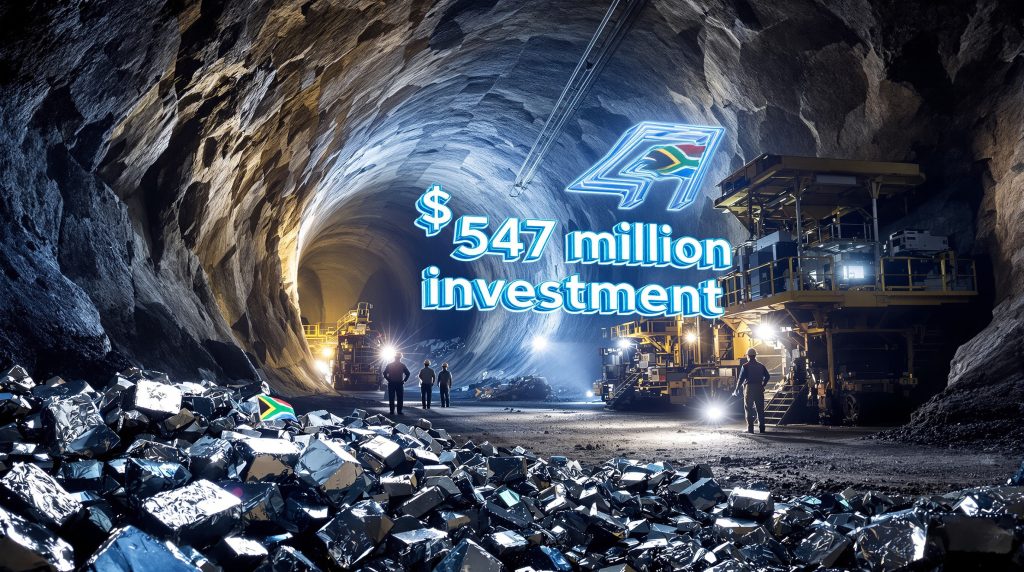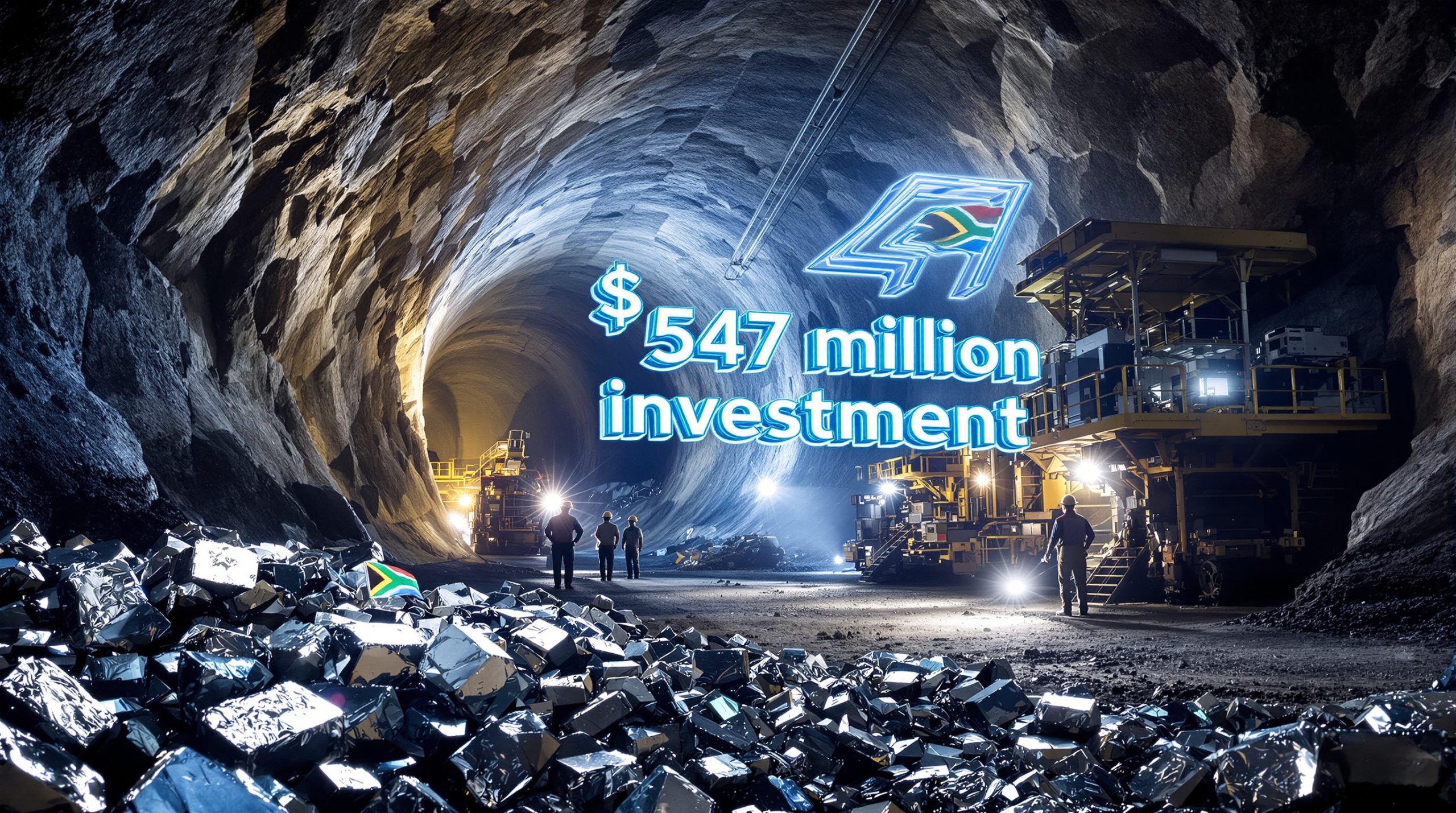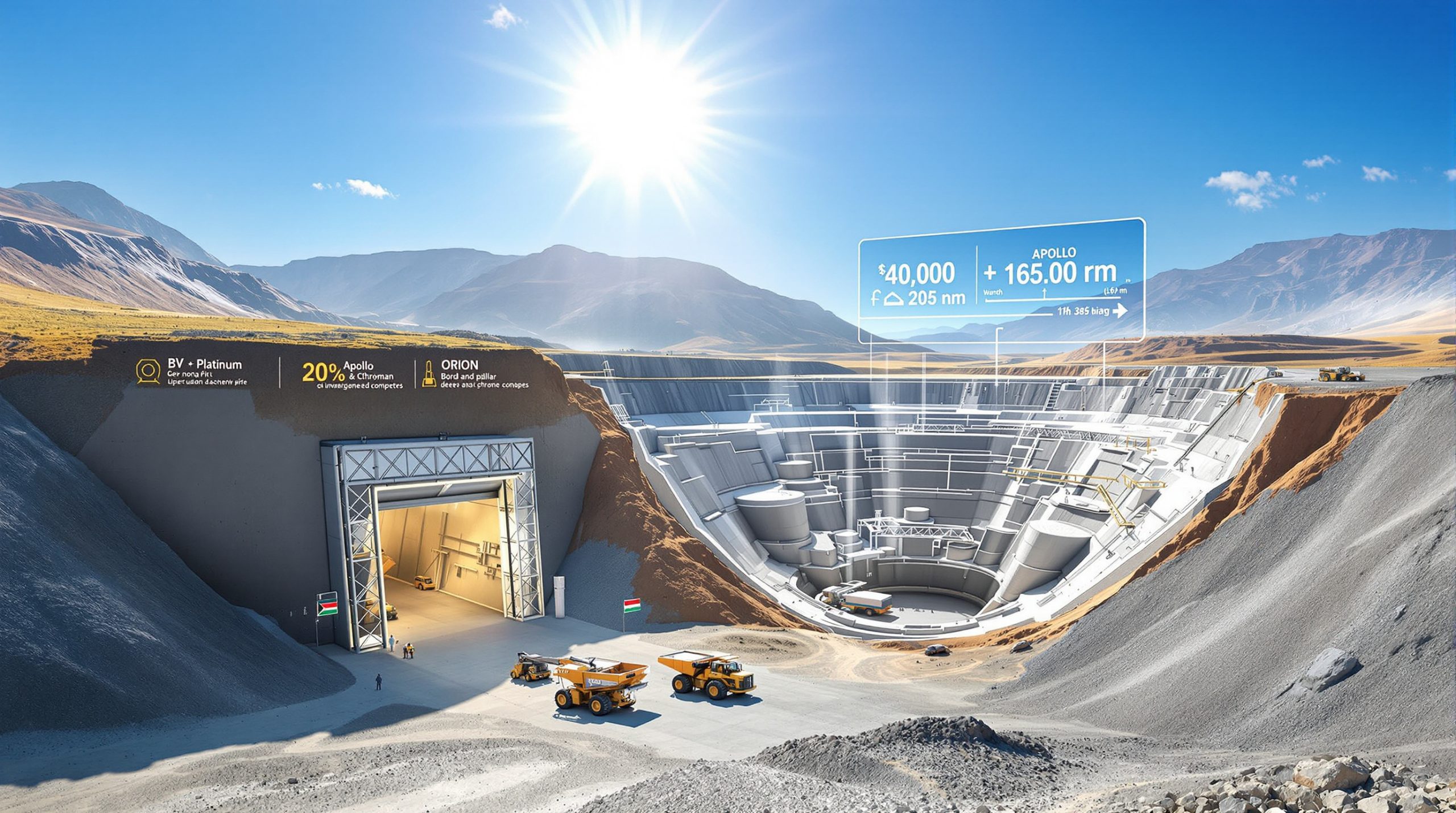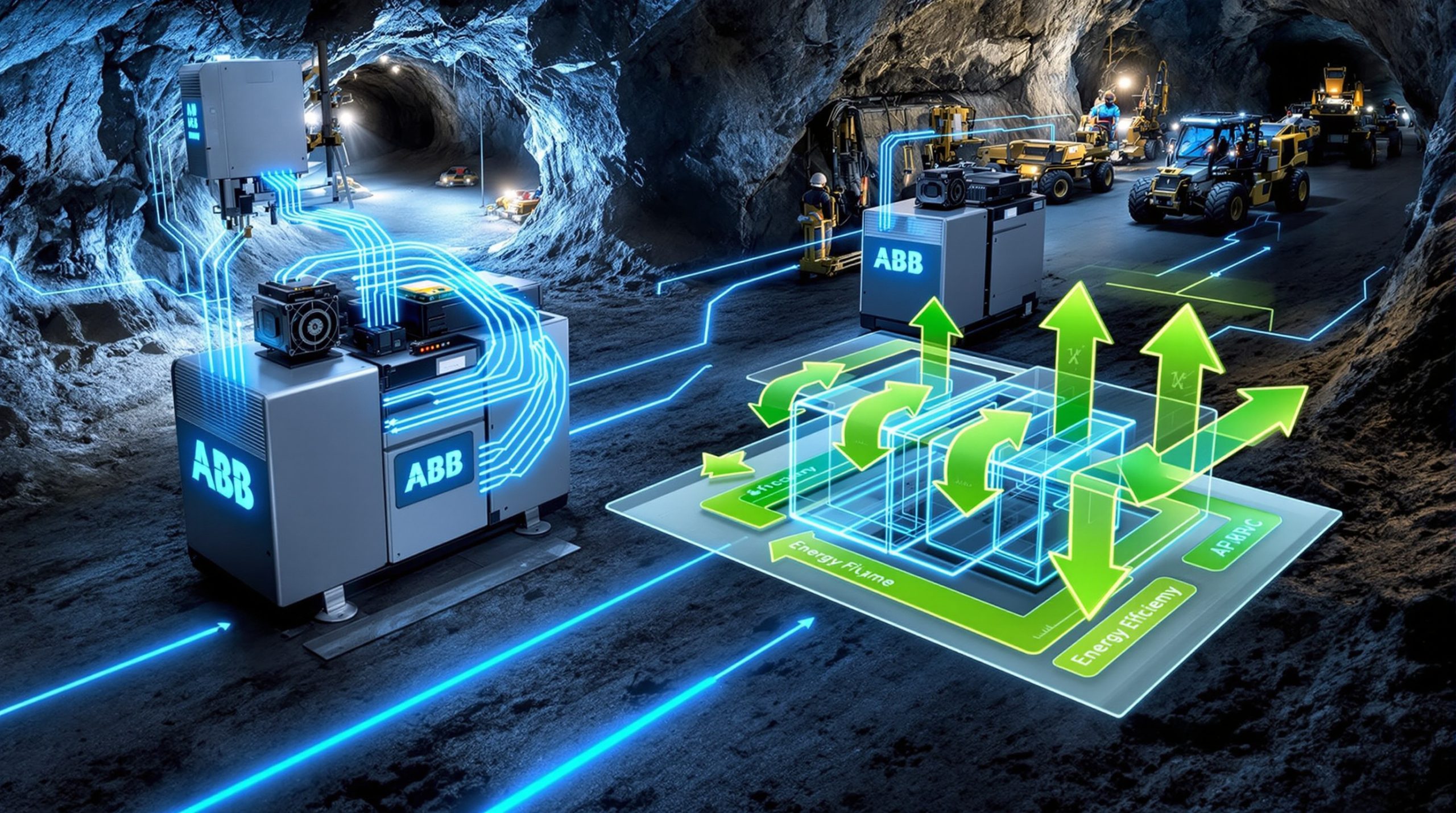Tharisa's $547M Underground Platinum Investment: Transforming South Africa's Mining Future
South African mining company Tharisa PLC has unveiled ambitious plans to invest $547 million (R9.46 billion) in transitioning its existing open-pit operation to an underground platinum group metals (PGM) mining project. This strategic shift represents a natural evolution for the company's operations at its flagship Tharisa mine located on the mineral-rich Bushveld Complex in South Africa's North West Province.
The underground development aims to access deeper mineral reserves as the open-pit operation gradually depletes, ensuring the mine's long-term viability while maintaining production of both PGMs and chrome concentrates. This significant capital investment underscores Tharisa's commitment to South Africa's mining sector and confidence in the future demand for platinum and related metals.
Why is Tharisa Transitioning to Underground Mining?
Extending Mine Lifespan and Resource Utilization
The transition to underground mining represents a strategic approach to maximize the value of Tharisa's mineral resources. As surface mining operations approach their economic limits, underground development provides access to deeper ore bodies that would otherwise remain unexploited. This transition is expected to dramatically extend the mine's productive lifespan, potentially adding decades of operation.
The company's decision reflects careful resource management planning, ensuring continuous production while transitioning between mining methods. By developing engineering marvels underground while open-pit operations continue, Tharisa aims to create a seamless production flow that maintains supply chain commitments and workforce stability.
Addressing Declining Open-Pit Production
Like many mature open-pit operations, Tharisa's surface mine faces increasing strip ratios and operational challenges as it deepens. Underground mining offers a solution to these challenges by directly accessing ore bodies without the need for extensive waste rock removal. This approach potentially improves the operation's environmental footprint while maintaining access to valuable mineral resources.
The declining production trajectory of the open-pit operation necessitates this strategic pivot to ensure Tharisa maintains its market position in both the PGM and chrome sectors. Without this transition, the company would face diminishing returns and eventual closure of a still-valuable mineral asset.
How Will the Underground Project Be Implemented?
Development Timeline and Phased Approach
Tharisa plans a carefully orchestrated decade-long transition from surface to underground mining. The first underground ore is expected to reach processing facilities by the second quarter of 2026, marking the beginning of a new operational era for the company. The project will be developed in phases, with initial production supplementing declining open-pit output before eventually becoming the primary production source.
The company has outlined a structured development schedule:
| Development Phase | Timeline | Key Milestones |
|---|---|---|
| Initial Development | 2025-2026 | Engineering design, shaft sinking begins |
| First Production | Q2 2026 | Initial ore delivery from first shaft |
| East Pit Transition | From 2036 | East open pit transitions to underground |
| West Pit Transition | From 2041 | West pit transitions, completing full underground conversion |
| Full Underground Operation | 2041+ | Open-pit mining concludes, full underground production |
This phased approach allows for capital expenditure to be spread over time while enabling operational learning and adaptation before full-scale underground mining commences.
Technical Specifications and Mining Methods
The underground project will employ modern mechanized mining methods to enhance efficiency, safety, and productivity. Unlike traditional labor-intensive underground mining operations in South Africa, Tharisa's approach emphasizes technological innovation and automation to improve both operational performance and worker safety.
Key technical elements include:
- Development of two primary shaft systems for ore extraction
- Implementation of mechanized mining equipment
- Advanced ventilation and ground support systems
- Digital monitoring and control technologies
- Integrated ore transportation and hoisting infrastructure
These technical innovations aim to overcome the challenges traditionally associated with deep-level mining in South Africa, including heat, ground pressure, and logistical complexity.
What Production Targets Has Tharisa Set?
PGM and Chrome Output Projections
At steady-state operation, the underground mine is projected to produce a minimum of 200,000 ounces of PGMs and over 2 million tonnes of chrome concentrate annually. These targets represent a significant production base that will support Tharisa's market position in both commodity sectors.
For comparison, the company's current production guidance for the 2025 financial year stands at 140,000-160,000 ounces of PGMs and between 1.65 million and 1.8 million tonnes of chrome concentrates. The underground development aims to not only maintain but potentially exceed these production levels over the long term.
Economic Impact and Investment Returns
The $547 million investment represents one of the largest capital commitments to South African beneficiation opportunities in recent years. This substantial financial commitment highlights Tharisa's confidence in both the geological potential of its resource base and the long-term market outlook for PGMs and chrome.
Expected economic benefits include:
- Extended mine life securing thousands of direct and indirect jobs
- Continued export earnings and tax revenues for South Africa
- Sustained community development initiatives in mining regions
- Technology transfer and skills development in advanced mining methods
- Strengthened position in global PGM and chrome supply chains
The project's economic viability depends on maintaining operational efficiency while managing the higher costs typically associated with underground mining compared to open-pit operations.
How Does This Project Compare to Other PGM Developments?
South Africa's PGM Mining Landscape
Tharisa's underground project joins a select group of new PGM developments globally. According to industry analysts, it represents one of only two significant greenfield platinum mining projects currently under development worldwide, with the other being Ivanhoe's Platreef mine, also in South Africa.
This scarcity of new developments highlights several industry challenges:
- High capital requirements for new mine development
- Technical complexity of accessing deeper ore bodies
- Market uncertainty regarding future PGM demand
- Operational challenges in South Africa's mining sector
- Environmental and social licensing constraints
Against this backdrop, Tharisa's commitment to expanding its PGM operations demonstrates confidence in overcoming these industry-wide challenges.
Strategic Positioning Within Global PGM Supply
The project positions Tharisa to maintain its role in global PGM supply chains at a time when few new sources are being developed. South Africa continues to dominate global platinum production, accounting for approximately 70% of world output, making developments like Tharisa's underground project strategically important for supply security.
The company's simultaneous development of the 226,000-ounce-per-year Karo platinum mine in Zimbabwe further strengthens its regional presence in the PGM sector, creating operational synergies and market leverage across multiple assets.
What Role Will PGMs Play in the Future Economy?
Critical Metals for Energy Transition
Despite concerns about declining demand from traditional automotive catalytic converters as electric vehicle adoption increases, PGMs remain strategically important for several emerging technologies. Tharisa's CEO Phoevos Pouroulis emphasized this point, noting that PGMs are "critical metals and minerals that the world has realized are a necessity to transition to a future world."
Key future applications for PGMs include:
- Hydrogen fuel cell technologies requiring platinum catalysts
- Green hydrogen production utilizing iridium and platinum
- Next-generation electronic components
- Medical applications including cancer treatments
- Industrial catalysts for chemical manufacturing
- Jewelry and investment demand
This diversification of end uses provides a hedge against declining demand from any single sector, supporting long-term market stability.
Market Outlook and Supply-Demand Dynamics
The PGM market faces complex supply-demand dynamics in the coming decades. While traditional automotive demand may decline, emerging applications in hydrogen technologies could create significant new demand sources. The critical minerals energy transition makes projects like Tharisa's underground development particularly significant for future market balance.
Industry forecasts suggest that despite electric vehicle growth, internal combustion engines will remain a significant part of the global vehicle fleet for decades, maintaining baseline demand for autocatalysts. Meanwhile, hydrogen economy development could create substantial new platinum demand, potentially exceeding historical automotive consumption if hydrogen achieves widespread adoption.
What Environmental and Social Considerations Apply?
Sustainability Advantages of Underground Mining
Underground mining offers certain environmental advantages compared to open-pit operations, particularly regarding surface disturbance and visual impact. By transitioning to underground methods, Tharisa can potentially reduce its environmental footprint while continuing to extract value from its mineral resources.
Key environmental considerations include:
- Reduced waste rock generation compared to expanding open pits
- Lower dust emissions and visual impact
- Potential for more efficient water management
- Opportunities for energy efficiency improvements
- Progressive rehabilitation of surface mining areas
These environmental benefits must be balanced against the higher energy intensity typically associated with underground operations due to ventilation, cooling, and hoisting requirements.
Community and Workforce Implications
The transition to underground mining has significant implications for Tharisa's workforce and surrounding communities. Underground operations typically require different skill sets and create different occupational health and safety considerations compared to surface mining.
Important social dimensions include:
- Training and upskilling programs for the existing workforce
- Potential changes in employment patterns and job requirements
- Enhanced safety systems and protocols for underground environments
- Continued community engagement and development initiatives
- Long-term regional economic stability through extended mine life
Successfully managing these social aspects will be crucial for the project's overall sustainability and social license to operate.
What Challenges Must Tharisa Navigate?
Technical and Operational Hurdles
Transitioning from open-pit to underground mining presents numerous technical challenges that Tharisa must overcome to achieve its production and cost targets. These include:
- Ground control in potentially complex geological settings
- Water management and dewatering requirements
- Ventilation and cooling for deep operations
- Ore handling and transportation logistics
- Integration with existing processing infrastructure
The company's ability to effectively address these technical challenges will significantly influence the project's economic performance and safety record.
Financial and Market Risks
The $547 million capital investment carries inherent financial risks that must be managed throughout the decade-long development period. Key financial considerations include:
- Capital cost control during development
- Operating cost management in the underground environment
- Commodity price volatility for both PGMs and chrome
- Currency fluctuations affecting the rand-denominated cost base
- Securing appropriate financing structures
- Balancing shareholder returns with capital requirements
Effective capital allocation and financial risk management will be essential for delivering shareholder value while funding this major development project.
Implications for South Africa's Mining Future
Tharisa's $547 million underground platinum investment South Africa represents a significant vote of confidence in South Africa's mining sector and the long-term prospects for PGMs. By extending the life of its operations through this transition to underground mining, the company demonstrates a commitment to sustainable resource development and continued value creation from South Africa's mineral endowment.
The project highlights the mining industry evolution toward more technologically advanced, efficient operations that can compete globally while addressing environmental and social imperatives. If successful, this development could serve as a model for other South African mining operations facing similar transition challenges as surface resources are depleted.
For investors, communities, and policymakers, Tharisa's underground development offers a glimpse of what sustainable, long-term mining investment in South Africa might look like in the coming decades – balancing economic returns with environmental responsibility and social development through innovative mine reclamation innovations.
Ready to Capitalise on the Next Major Mineral Discovery?
Stay ahead of the market with real-time alerts on significant ASX mineral discoveries through Discovery Alert's proprietary Discovery IQ model, delivering actionable insights for both short-term traders and long-term investors. Explore why historic discoveries like those highlighted in Tharisa's platinum project can generate substantial returns by visiting the Discovery Alert discoveries page.




